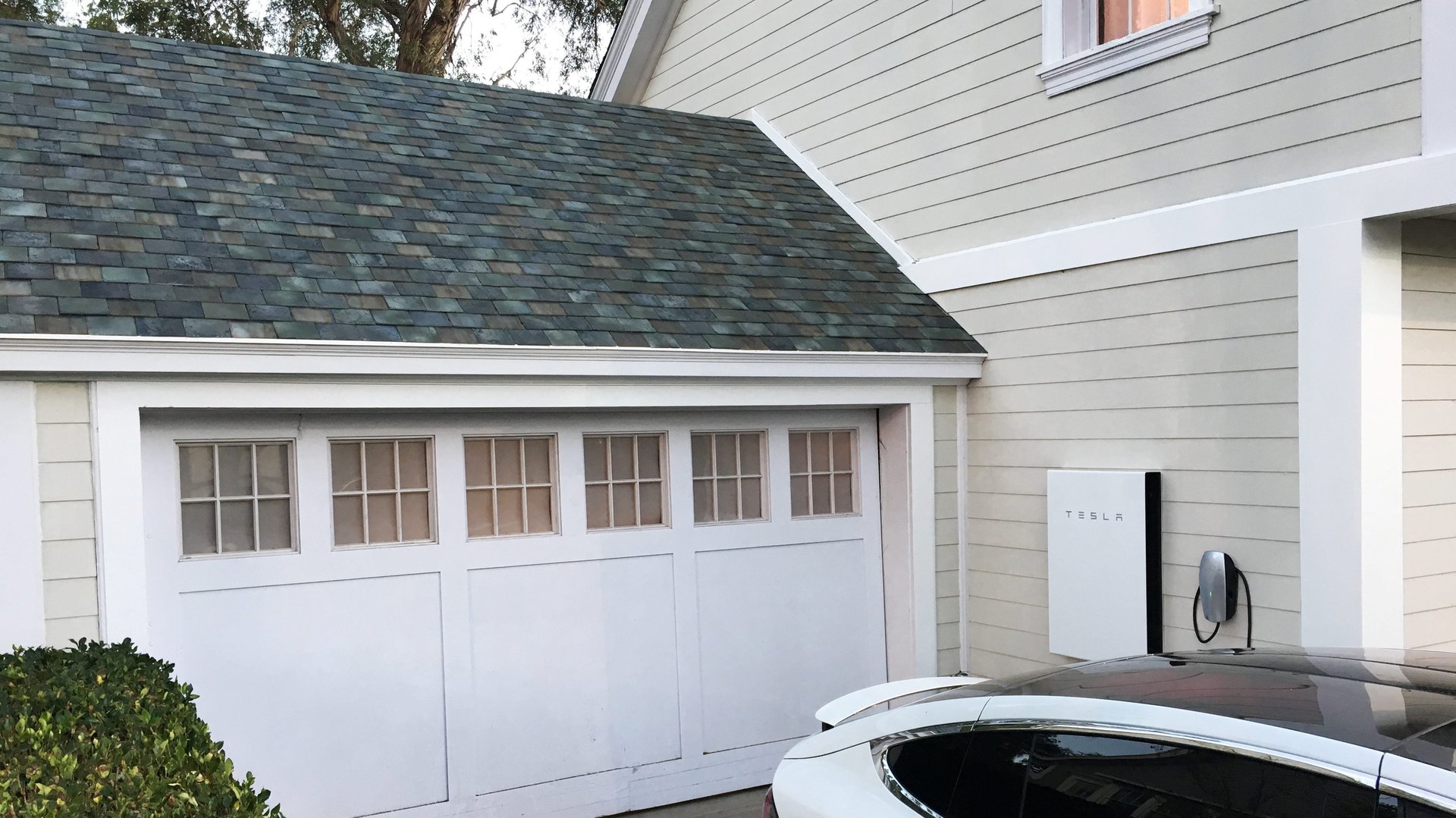A new Austin community will come standard with Tesla solar panels and batteries
Elon Musk is continuing to grow his footprint in Texas by installing the latest version of Tesla’s solar roof on thousands of new homes.


Elon Musk is continuing to grow his footprint in Texas by installing the latest version of Tesla’s solar roof on thousands of new homes.
In early July, developers in Austin announced an entire neighborhood will be built with the third version of Tesla’s solar roof tiles and Powerwall battery storage installed in every home. Those homes will be part of a development known as SunHouse at Easton Park which will incorporate electric vehicle charging stations and other features. It aims to be “the most sustainable residential community” in the US, according to a statement from the firm backing the development. It’s also one of the first opportunities Tesla will have to test its beleaguered solar technology on a large scale.
Tesla first unveiled its solar roof in 2016 as part of a big bet on solar energy that included the acquisition of SolarCity, a company founded by Musk’s cousins Lyndon and Peter Rive. In the time since, the Tesla solar roof has run into technical issues and mounting costs in manufacturing and installation, leading to exasperated customers and even a lawsuit from Walmart, for fires allegedly caused by the solar panels. During a first quarter earnings call earlier this year, Musk admitted to “significant mistakes” with the previous roof iterations, but made improvements to the technology in 2019.
One advantage of the new development is that the solar panels will be directly integrated into the construction of the homes instead of being retrofitted on existing buildings. So far, only a few homes were built with Tesla’s new solar roofs in June, as testbeds for future construction. A few thousand homes are slated for future phases of the project. “The feedback we get from the solar and battery products used in this community will impact how we develop and launch new products,” said Musk in the statement.
Tesla’s hardware may enable microgrids
Building hundreds of homes that can generate and store their own electricity sets the stage for the next evolution of the power system: microgrids.
Microgrids are self-contained networks (pdf) of energy providers and consumers. Instead of the classic hub and spoke model for electricity grids (with massive power plants at the center), individual homes can generate and store their own electricity, while “command center” software manages supply and demand between them. Although most microgrids are connected to the grid, these networks can also operate independently if there is an outage.
Microgrids have gained popularity for their resilience and reliability over centralized systems in the face of extreme weather events caused by climate change. There are currently more than 450 microgrids operating in the US, most at commercial facilities or institutions like universities or military bases, according to data kept by the Department of Energy.
But residential microgrids are growing in popularity to enhanced reliability and scale up wind and solar development (California already mandates net-zero emissions for new homes, and other states are following suit). In Texas, energy reliability is of particular concern after massive blackouts following a disastrous February storm, and a heatwave in June that strained the state’s electricity system, as Jason Plautz reports in Smart Cities Dive.
While the planned development in Austin won’t operate as a microgrid for now, the possibility exists in the future, says Peter Asmus, an expert on microgrids at Guidehouse Insights. “These things can be incremental and grow over time,” says Asmus. “The technology tends to be more advanced than the regulation, but the regulations are generally all moving in the direction of allowing microgrids.”
And Tesla’s solar roof technology is well-positioned to facilitate a microgrid: the solar roof software is designed for interconnection, and the company already offers microgrid controller software as part of its energy offerings. Eventually, Tesla may be able to offer residents of neighborhoods like SunHouse the benefit of a microgrid to protect against future blackouts.